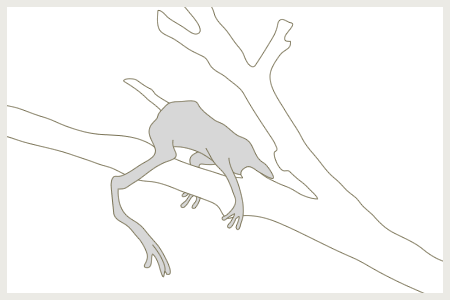Order: Passeriformes, Family: Laniidae; Total Length: 20cm; Distribution: Asia
The Bulled-Head Shrike twirls its tail, which is longer than that of the Eurasian Tree Sparrow, and prefers open environments to forests, and so is often seen along rivers or on farmland that has some shrubs. The shrike lives alone, except during the breeding season. It feeds on insects, and sometimes tries to prey on small animals or birds. And it has a habit of impaling its prey on twigs or thorns. The male has a thick, black stripe above the eye, a grayish back, and a white patch on its wings. During the breeding season, it makes a high-pitched shriek,“Gichi, gichi.” The female also shrieks in this manner, so it may function as a warning.
Play birds singing
In Japan, the Bull-headed Shrike's high-pitched call has long been a familiar sign of the coming of fall. In some regions, farmers time their work by the bird's call, which indicates that the first frost will fall on the fields in 75 days.
Similar to the Japanese Bush Warbler, the male bird has a special call it only makes during spring and summer. It serves to both attract a female and mark its territory. After breeding, most small birds abandon their pair bond or family unit, stop territorial singing and often form flocks. However, the carnivorous Bull-headed Shrike is different. In the fall both male and female declare their territories with their call because, as hunters, they must ensure they have enough food to survive the winter.
In spring, when other birds begin to sing, male Bull-headed Shrikes will mimic their songs. They excel at mimicry, imitating not only the songs of other birds, such as Bush Warblers, but also the neighs of horses. Some studies suggest that the female will choose a mate with the widest repertoire, which may be why the males try to mimic the songs of various other birds.
The Bull-headed Shrike seems to be disappearing from gardens and parks in urban areas, and in Tokyo metropolitan area it is designated as an endangered species . If the number of insects or small animals decrease, the animals that prey on them cannot survive, and so the Bull-headed Shrike acts an indicator species, reflecting the condition of its environment.
The female is dark brownish color, and like the male, has a curved beak like a hawk. Both the male and female tend to perch on conspicuous spots, making them easy to see.

A frog impaled on a twig. It is not known why the bird impales its prey, but it could be to store food, to mark its territory or to tear food but fly away to evacuate from danger.